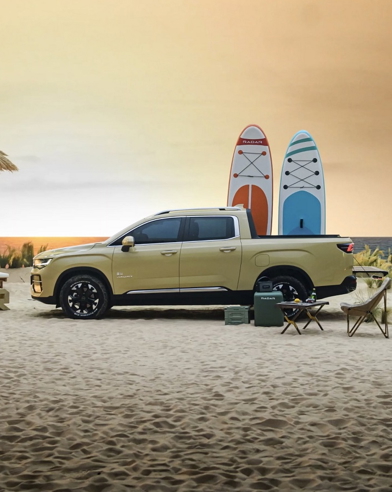American motorcycle brand Harley-Davidson has been threatening an all-electric model for some time and made good on the promise at this month’s Consumer Electronics Show (CES) in Las Vegas.
The brand unfurled the order ledger and announced it was taking pre-orders for the LiveWire.
Remarkably, no one was seen to be snatching their Harley bandanas off their heads and stomping on them in disgust.
On the contrary, the press conference announcing pricing (from US$29,799, equivalent to NZ$44,121) was populated by as many grey-bearded accountant and doctor-types as had the iconic manufacturer been announcing a new Softail.
For a company that trades heavily on heritage, the idea of a plug-in Hog seems to have been met with curious interest rather than out-and-out revolt.
That’s not to say we wouldn’t consider someone turning up at next year’s Sturgis Motorcycle Rally on a LiveWire a brave person. Perhaps it’s down to the hardware. The LiveWire — on paper at least — looks tasty. The all-electric bike will sprint from 0-100km/h in 3.5 seconds and Harley claims it is good for 177km on a fully charged battery.
It does features trick “connected” tech that would probably baffle Easy Riders’ Peter Fonda and Dennis Hopper. A system called H-D Connect Service allows the LiveWire to relay information to the rider’s smartphone through a telematics system. It’ll warn the rider of any attempts at tampering with the bike, as well as basic info such as available charge and range.
Oh, and that big ol’ fuel tank up top still has a use: the batteries and charger unit are stored within, ensuring that while it might not offer that distinct Harley exhaust note, it still features the same silhouette as a Harley of old.
Supervan legacy still in fast Ford
God bless Ford UK and its decades-old assertion that the humble delivery van deserves the opportunity to boast high-performance firepower.
This belief started with the Transit-based Supervan, Supervan II and Supervan III projects in the 1970s and 80s and it’s good to see the desire for truly mad motorsport-inspired takes on conventional parcel delivery remain within Ford of Europe.
The bodyshell might be smaller, but Ford’s latest creation, the Focus RS-powered Transit Connect, is no less bonkers, proving a courier van with a hot-hatch engine is one of the best Frankenmotor recipes around.
Despite having a first-gen Focus engine under its hood, the Transit RS Connect can still shift. The 2-litre four-cylinder is good for 158kW and 310Nm.
No, not startling by modern Ford EcoBoost engine tech standards, but with almost nothing bar a roll cage and Recaro sports seat inside, the Transit RS Connect weighs about as much as your average Amazon.com package. To aid with weight distribution, the van features two spare wheels in the cargo bay.
And a sub-seven second sprint from 0-100km/h still scoffs at the notion of orange “Fragile Item” stickers.
For some diverting screen time as you try to settle back into your late-January working week, we’d suggest heading to YouTube and seeking out the awesome old doco footage of the original Ford Supervan projects to be found there.
Toyota Century GRMN is the ultimate exec mobile
Forget your staid S-Class or A8. This one-off Gazoo Racing-tuned Toyota Century — as used by the manufacturer’s chief exec, Akio Toyoda — could be just about the coolest corporate luxobarge we’ve laid eyes on.
It was unveiled (subtly, without fanfare) after the introduction of the updated Century limo last year. The arrival of the latter was cause for modest celebration, given that the “mainstream” Century’s predecessor had been on sale since 1997. A new one was a big deal.
The new Century features a 5-litre V8 paired with a two-stage electric motor and nickel-metal hydride battery. That unit is good for 280kW, but there’s no word from Toyota on what performance enhancements have been adopted in the Century GRMN.
The interior appears to follow the same traditional lines as Centurys past; namely, velour everywhere, as well as antimacassars on the headrests.
Woodgrain also continues to play a solid part of the design.
One question remains: does Toyoda drive it? Most examples of the big $200,000-plus limo are purchased by Japanese businesspeople who prefer to be chauffeured.
Toyoda’s love of motorsport is well known; so, one wonders whether the Century GRMN will be seen at a closed session on a Toyota test track any time soon with a business-suited salaryman at the wheel?




